Patterns
Kits
sundries
knitting tools, buttons and notions, project bags and other pleasing little things
knitting tools, buttons and notions, project bags and other pleasing little things
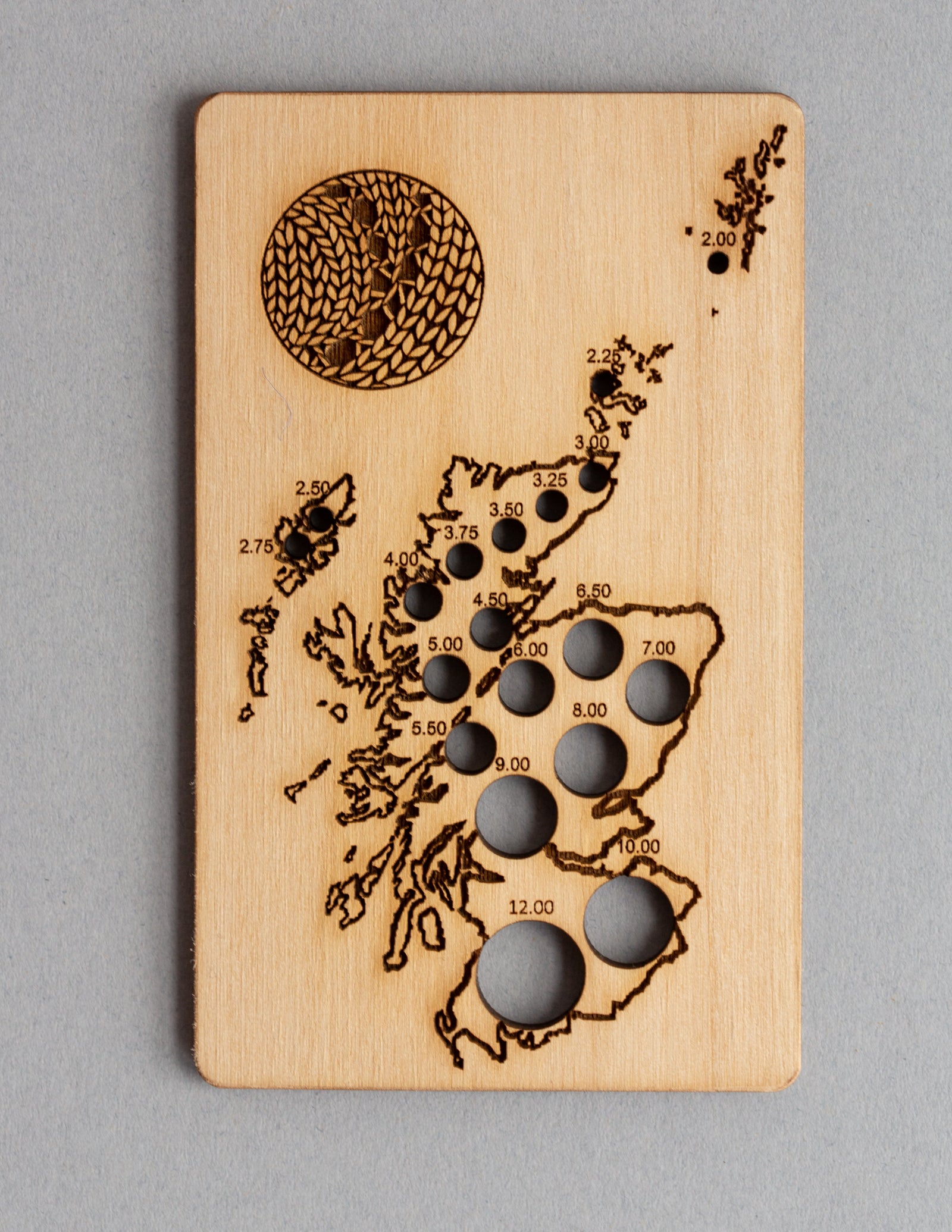
Exclusive Scotland needle gauge by Katrinkles
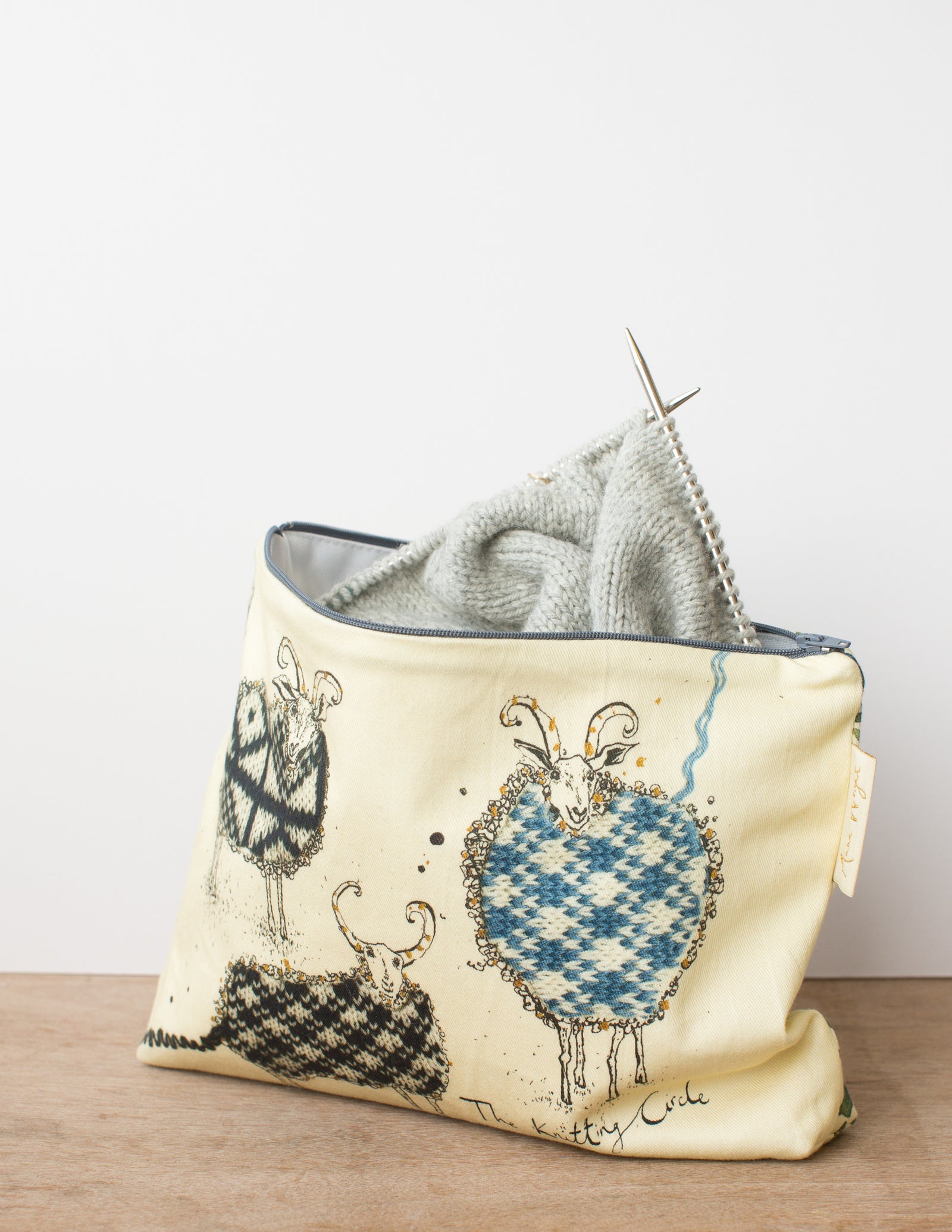
Zippered pouches in two sizes by our studio neighbour Anna Wright
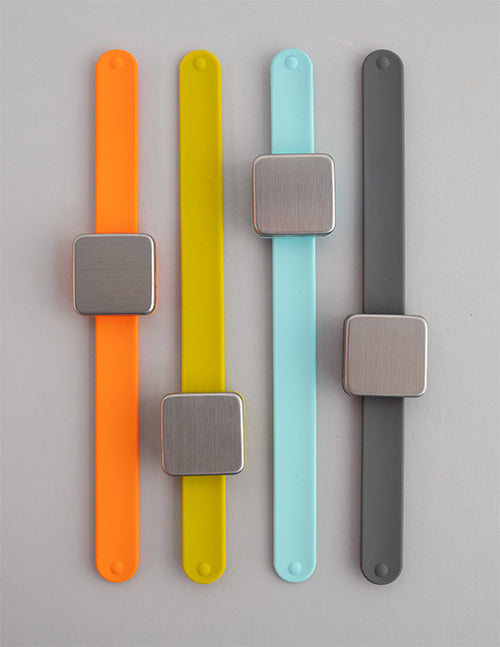
keep small tools accessible with the Maker's Keep
gift 2019
Subscribe to our Colourwork Club for a gift that lasts well into the new year. Your recipient will receive a new colourwork kit in Janurary, February and March
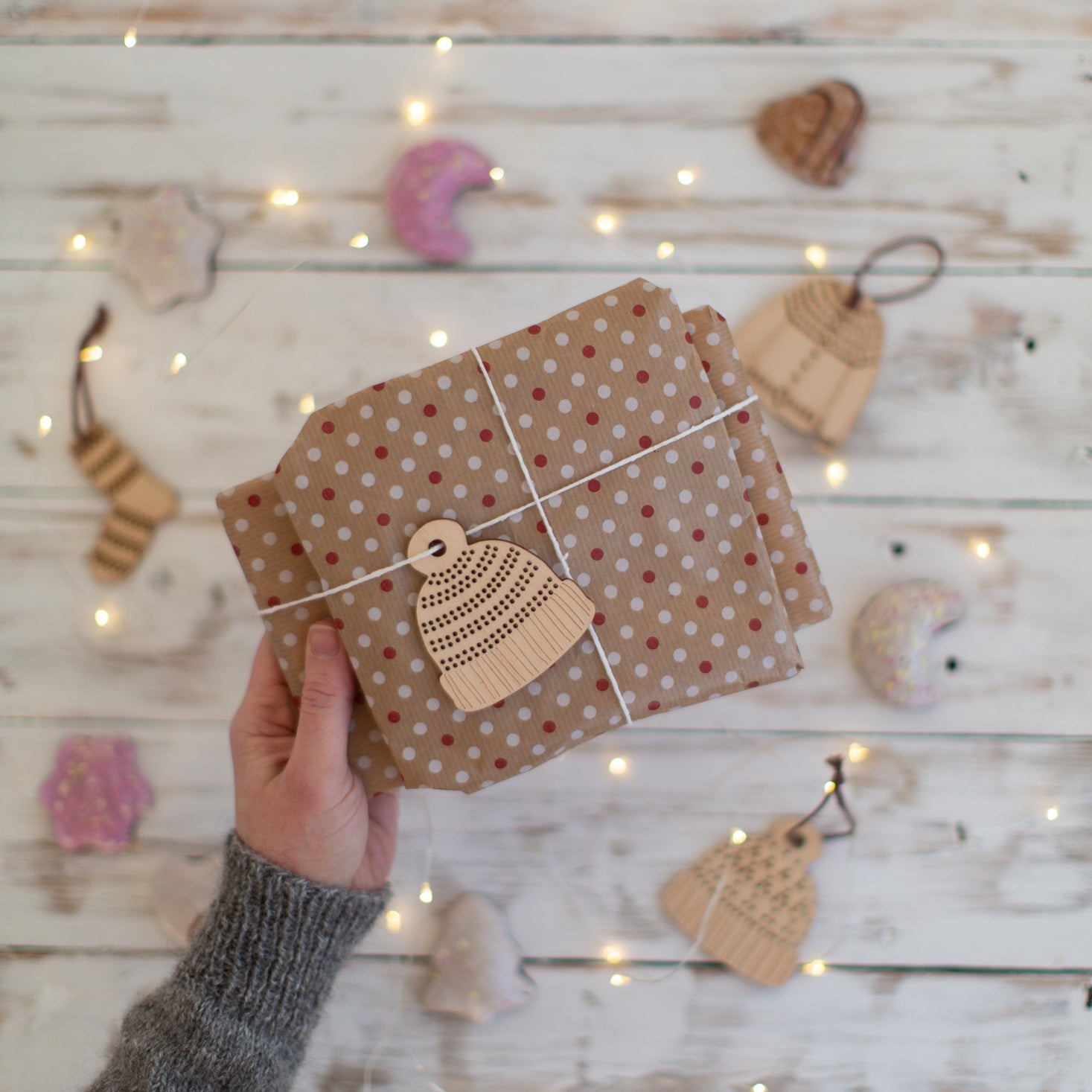
Subscribe to our Colourwork Club for a gift that lasts well into the new year. Your recipient will receive a new colourwork kit in Janurary, February and March


Last minute shopping? Gift cards are delivered electronically - forward the email or print it for your recipient. A range of amounts are available and gift cards don't expire.

Steeking Strokkur
April 04, 2014

Like most people who have been knitting for years I have noticed things about myself as a knitter. I gravitate toward certain colors, I often match my nail polish to my knitting, and I find myself wearing my hand knit cardigans WAY more often than I wear hand knit pullovers.
So when I decided I wanted to knit Strokkur there was no question for me that I would prefer it as a cardi. Since working stranded knitting with right- and wrong-side rows is needlessly complicated, the best solution seemed to steek it.
If you’ve never done a steek it can be a little intimidating. So many times I’ve heard “Wait… you’re going to CUT your KNITTING!?!” accompanied by a shocked or horrified face. But steeks have been the best solution to a stranded cardigan for hundreds of years. And if you remember to follow the steps and prepare your knitting properly it’s totally painless (although some yoga breathing and a sip of wine to steady your nerves might not be a bad idea your first time out).
My first time I forgot to stitch the steak to reinforce it (which wouldn’t have been so important if the gauge hadn’t been a little loose) and cut a half-stitch off from where I should have cut (because I didn’t mark it properly). But the sweater still turned out beautifully and gets lots of wear.
Add extra stitches for the steek
When you’re converting a pattern like Strokkur to be steeked, there are a couple of things you have to remember.

1. You need to add extra stitches for the steek. I used 5 stitches (which would give me 2.5 sts on each side of the cut). I like to do an odd number because it makes it very easy for me to find the center. Pick a number appropriate to your gauge. For instance, if I were converting a sweater knit at 8 spi, 2.5 stitches on each side of the steek is TINY. But with Strokkur, 2.5 sts was fine.
Cast on your extra stitches, and mark them clearly. During the ribbing portion, work the steek stitches in stockinette instead so they will lay flat once they’re cut. When you get to the colorwork, alternate both of your working yarns so your steek stitches look like a little multi-colored checkerboard.

2. The beginning of the round isn’t necessarily where you want it. For the single-color body portion having the marker at the side of the body is fine. With Strokkur, the marker then moves to the center front when you join in the sleeves. When you get to the colorwork section, you’re instructed to reposition the End of Round marker. But if you’re steeking it, the EOR marker is already in the perfect position at center front. Just work one more row finishing your short rows and removing sleeve decrease markers and start your colorwork at the center front just after your steek stitches.
It will be helpful later when you lower the front neck to have a marker where the non-steeked EOR marker WOULD have gone. So stick a marker there and then slip it until you need it. When you get to the section marked “WORK SHORT ROWS TO LOWER FRONT NECK”, just knit to your previously-ignored EOR marker, then follow the directions as written until you reach the neckband, at which point you will revert to your normal EOR marker.
Prepare the steek for cutting
Once you’re done with the knitting of the sweater…. but you’re not really done. Here’s the breakdown of the steek.

1. Mark where you want to cut. I like to do this with a contrasting bit of thread or fine yarn. I used a running stitch and some red yarn to make it REALLY obvious where I intended to cut. I didn’t want to repeat my first-timer error 
2. Stitch your steek. You can do this with a sewing machine, but I love handsewing and I wanted the extra measure of control. Use a thread with a similar color so it won’t stand out too much, and stitch on both side of the cutting line. Use a backstitch and try as much as you can to run your needle THROUGH strands of yarn. You want to encourage the yarn to stay in place and not unravel. Lopi is pretty sticky yarn (meaning it likes to stick to itself), so you could probably avoid this step if you have steeked before, but I’m a worrier and I find the extra time spent stitching the steek makes me feel better even if it isn’t strictly necessary 

3. You’re ready to cut. Take a deep breath, remove the contrasting strand that marked the cut line, and start to cut. Cut carefully and evenly, right in the ditch in the center of that center stitch. The whole round piece will now be an open sweater. But you’re still not done.
Knit the Button Bands
4. Pick up for your front bands. Pick up your stitches through the fabric right in the ditch where steek stitches meet sweater body stitches. Since our steek was 2.5 sts wide on each side, this ditch will be 2.5 sts in from the cut edge. It can be a little tricky to see it at the bottom of the sweater, but pretty clear when you look at the color work.
If you want to be really precise, you can check your row gauge against your stitch gauge to figure out a reasonable rate of increase (Say your gauge is 6 sts & 8 rows per square inch, then 6/8 = ¾, pick up 3 sts every 4 rows), or you can just pick up 3 stitches for every 4 rows to start with. It usually works out. Make sure both buttonbands have the same number of stitches.

I worked my bands in garter stitch (to match the neckband), with a contrast color bind off, but if you prefer ribbed button bands you could do that. Decide which side you want the buttonholes on (we could have endless debates about which way is “correct” and Ysolda and I have discussed it at length) and use a buttonhole calculator, to figure out your buttonhole placement. I like LOTS of buttons so I did 9 buttonholes, but I knew that the bands were going to be pretty narrow (they’re just shy of ¾”) so I chose small buttons and did my buttonholes with 2 stitches each.
5. Sew on your buttons, weave in your ends, and block it. Enjoy your new cardigan!

When your bands are done, the cut edges flip toward the inside and lay flat against the wrong side of the body. You can see here that my half-stitch unraveled but the other 2 stitches have remained intact snug inside the stitching line. If having these ends bugs you (or you’re using a less sticky yarn) you can always cover the raw edge with a pretty ribbon, or tack the flap to the body of the sweater for extra security.
With the aforementioned first steeked sweater, since the cut edges were uneven and not reinforced I sewed a grosgrain ribbon over them and haven’t had to worry. The ribbon protects them from snags and extra wear that might help them to unravel.
My Strokkur is a great replacement for my coat in the variable Utah spring weather. It will be cold and blustery in the morning, but warm by the afternoon, so I just remove my scarf and unbutton my sweater. Perfect!

Also in Journal
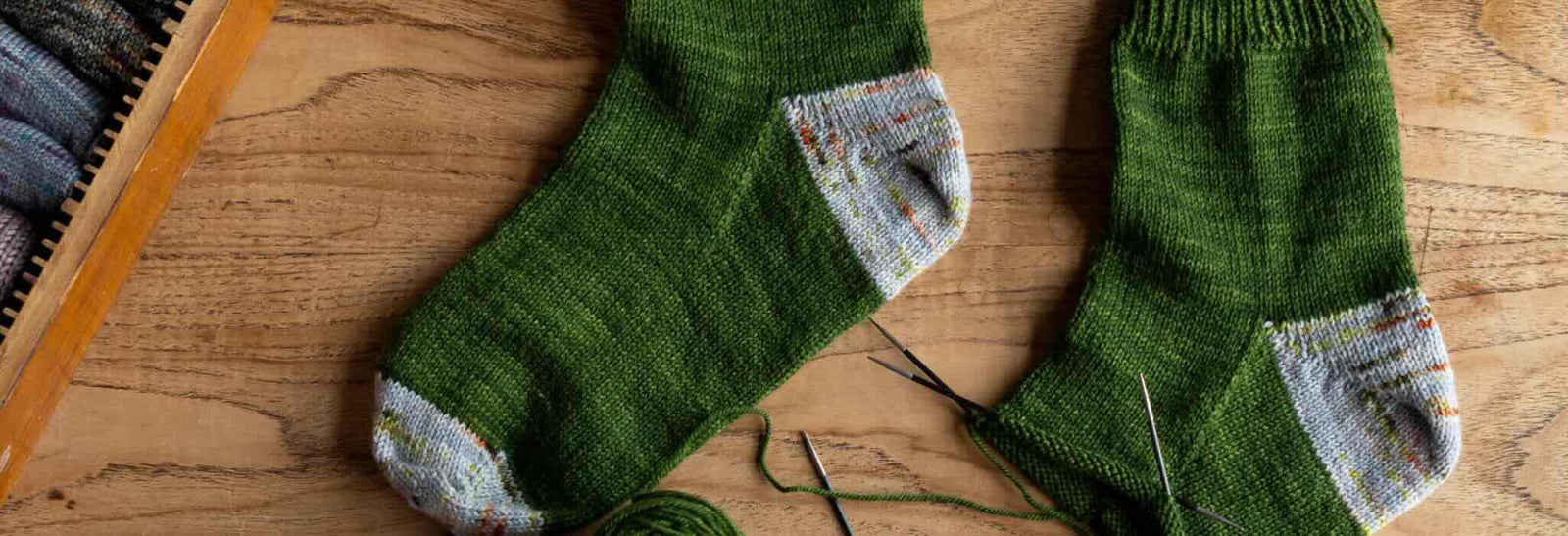
Deep Shadow Heel Tutorial
September 25, 2025

20 Years of Ysolda Knitting Patterns: Part 2
June 23, 2025

20 Years of Ysolda Knitting Patterns: Part 1
June 19, 2025
Recent Articles
-
Deep Shadow Heel Tutorial
September 25, 2025
-
20 Years of Ysolda Knitting Patterns: Part 2
June 23, 2025
-
20 Years of Ysolda Knitting Patterns: Part 1
June 19, 2025
-
Learn to Knit: Mattress Stitch
March 29, 2023
-
How to Knit a Scarf: A Beginners Guide to Scarf Knitting
March 23, 2023
-
Learn to knit: the long tail cast-on
February 03, 2022
-
How to Graft Your Knitting
December 09, 2021
-
Crochet Provisional Cast-on
December 02, 2021
-
Learn to knit: How to knit in the round with double pointed needles
November 25, 2021
-
Learn to knit: How to knit in the round using the magic loop technique
November 25, 2021
Free resources
-
KALS, step-by-step pattern guides and free patterns
Learn brioche with the free Daniel's Hat pattern
Tombreck - a free chevron beanie pattern
Working the brioche neck detail on the Polwarth sweater
Installing a zipper and ribbon, finishing wee Carson
Yarn colour ideas for Threipmuir sweater
Additional colourways for the Joy mitts (choose your pride flag)
How to join the shoulders on Wardie
How to join the pockets on Granton and Wardie
Finishing Resources for Granton
Broughton mittens tutorial part 1
Broughton mittens tutorial part 2
Broughton mittens tutorial part 3
Basics
Casting on
Decorative Channel Island Cast-on
Binding off
3 Easy Stretchy Bind-offs (p2tog bind-off; k2togtbl, k1 bind-off; Jeny's surprisingly stretchy bind-off)
Tubular Bind-off for brioche stitch
Increasing
Paired increase methods compared
How to continue in pattern while increasing and decreasing
Decreasing
Brioche stitch double decreases
Knitting in the round
How to Knit in the round using Magic Loop
How to Knit in the round using DPNs
Short rows
Swatching and gauge
Tips and tricks
Avoiding ears when binding off
Tighter purl stitches for neater cables and ribbing
Cabling without a cable needle
How to knit more symmetrical yarn overs
Bust darts in sweaters with all over stitch patterns
A magic formula for evenly distributing shaping
Superwash v Non-Superwash Wool
Picking up sts from the middle of the fabric
Reading knitting patterns
Understanding "continue in pattern"
Help! Where am I in my knitting project?
Using charts, even if you hate them
Finishing
Garment knitting
Joining the body and sleeves on a seamless bottom up sweater
Sizing
Ysolda’s sizing chart for knitwear designers
Inclusive garment knitting
How to pick a garment without a model for you (specifically addresses finding garment patterns when your gender identity isn't represented and the styles you want to knit might not be sized to fit your body)
How does ease affect inclusive size ranges?
Specific stitch patterns
Lace
Identifying and fixing mistakes in lace knitting
Colourwork
Getting started with stranded colourwork
Understanding colour dominance
Working stranded colourwork over small circumferences
Decreases in stranded colourwork
Holding the yarn for stranded colourwork
Ladderback Jacquard (a neat way to deal with long floats)
Cables
Cabling without a cable needle
Cabling without a cable needle on the wrong side
How to knit cabled decreases
Closed ring cable increases and decreasesBrioche
How to work brioche stitch in the round
Other crafts
Cross stitch
How to begin your first large cross stitch project
How to finish a cross stitch project with an embroidery hoop frame
Mending

Sign up today
Find out the latest news from the studio such as sales, pattern releases, and new workshops or KALs our learning community, The Knitwork. We also share helpful tips and exclusive subscriber discounts...



